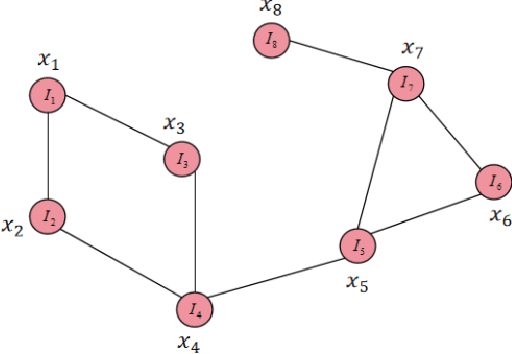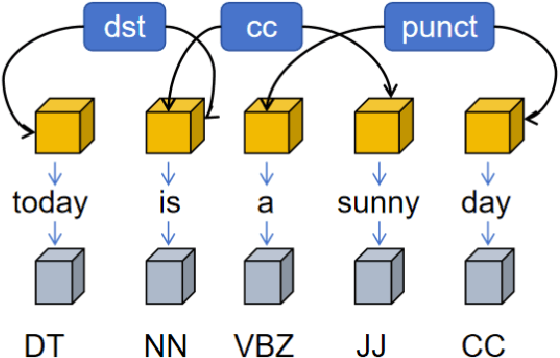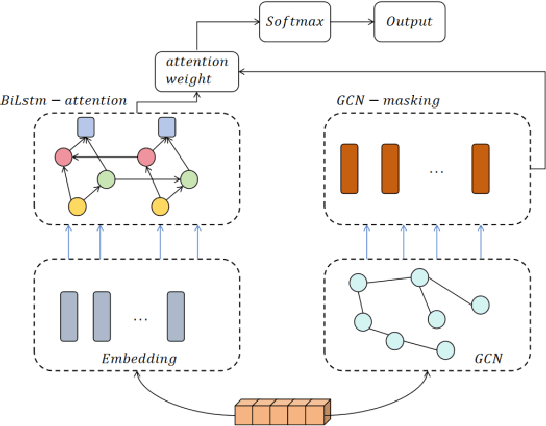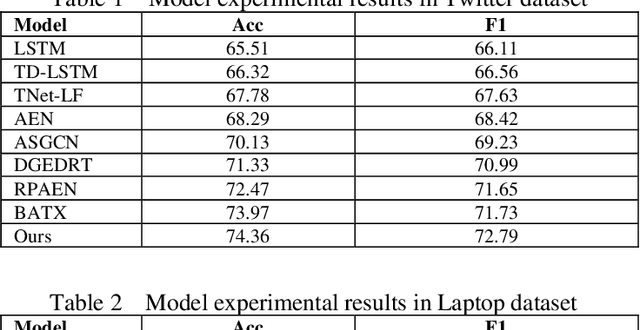Linxiao Wu
Graph Neural Network-Based Entity Extraction and Relationship Reasoning in Complex Knowledge Graphs
Nov 19, 2024


Abstract:This study proposed a knowledge graph entity extraction and relationship reasoning algorithm based on a graph neural network, using a graph convolutional network and graph attention network to model the complex structure in the knowledge graph. By building an end-to-end joint model, this paper achieves efficient recognition and reasoning of entities and relationships. In the experiment, this paper compared the model with a variety of deep learning algorithms and verified its superiority through indicators such as AUC, recall rate, precision rate, and F1 value. The experimental results show that the model proposed in this paper performs well in all indicators, especially in complex knowledge graphs, it has stronger generalization ability and stability. This provides strong support for further research on knowledge graphs and also demonstrates the application potential of graph neural networks in entity extraction and relationship reasoning.
Balancing Innovation and Privacy: Data Security Strategies in Natural Language Processing Applications
Oct 11, 2024



Abstract:This research addresses privacy protection in Natural Language Processing (NLP) by introducing a novel algorithm based on differential privacy, aimed at safeguarding user data in common applications such as chatbots, sentiment analysis, and machine translation. With the widespread application of NLP technology, the security and privacy protection of user data have become important issues that need to be solved urgently. This paper proposes a new privacy protection algorithm designed to effectively prevent the leakage of user sensitive information. By introducing a differential privacy mechanism, our model ensures the accuracy and reliability of data analysis results while adding random noise. This method not only reduces the risk caused by data leakage but also achieves effective processing of data while protecting user privacy. Compared to traditional privacy methods like data anonymization and homomorphic encryption, our approach offers significant advantages in terms of computational efficiency and scalability while maintaining high accuracy in data analysis. The proposed algorithm's efficacy is demonstrated through performance metrics such as accuracy (0.89), precision (0.85), and recall (0.88), outperforming other methods in balancing privacy and utility. As privacy protection regulations become increasingly stringent, enterprises and developers must take effective measures to deal with privacy risks. Our research provides an important reference for the application of privacy protection technology in the field of NLP, emphasizing the need to achieve a balance between technological innovation and user privacy. In the future, with the continuous advancement of technology, privacy protection will become a core element of data-driven applications and promote the healthy development of the entire industry.
Graph Neural Network Framework for Sentiment Analysis Using Syntactic Feature
Sep 21, 2024



Abstract:Amidst the swift evolution of social media platforms and e-commerce ecosystems, the domain of opinion mining has surged as a pivotal area of exploration within natural language processing. A specialized segment within this field focuses on extracting nuanced evaluations tied to particular elements within textual contexts. This research advances a composite framework that amalgamates the positional cues of topical descriptors. The proposed system converts syntactic structures into a matrix format, leveraging convolutions and attention mechanisms within a graph to distill salient characteristics. Incorporating the positional relevance of descriptors relative to lexical items enhances the sequential integrity of the input. Trials have substantiated that this integrated graph-centric scheme markedly elevates the efficacy of evaluative categorization, showcasing preeminence.
Research on Intelligent Aided Diagnosis System of Medical Image Based on Computer Deep Learning
Apr 29, 2024Abstract:This paper combines Struts and Hibernate two architectures together, using DAO (Data Access Object) to store and access data. Then a set of dual-mode humidity medical image library suitable for deep network is established, and a dual-mode medical image assisted diagnosis method based on the image is proposed. Through the test of various feature extraction methods, the optimal operating characteristic under curve product (AUROC) is 0.9985, the recall rate is 0.9814, and the accuracy is 0.9833. This method can be applied to clinical diagnosis, and it is a practical method. Any outpatient doctor can register quickly through the system, or log in to the platform to upload the image to obtain more accurate images. Through the system, each outpatient physician can quickly register or log in to the platform for image uploading, thus obtaining more accurate images. The segmentation of images can guide doctors in clinical departments. Then the image is analyzed to determine the location and nature of the tumor, so as to make targeted treatment.
 Add to Chrome
Add to Chrome Add to Firefox
Add to Firefox Add to Edge
Add to Edge